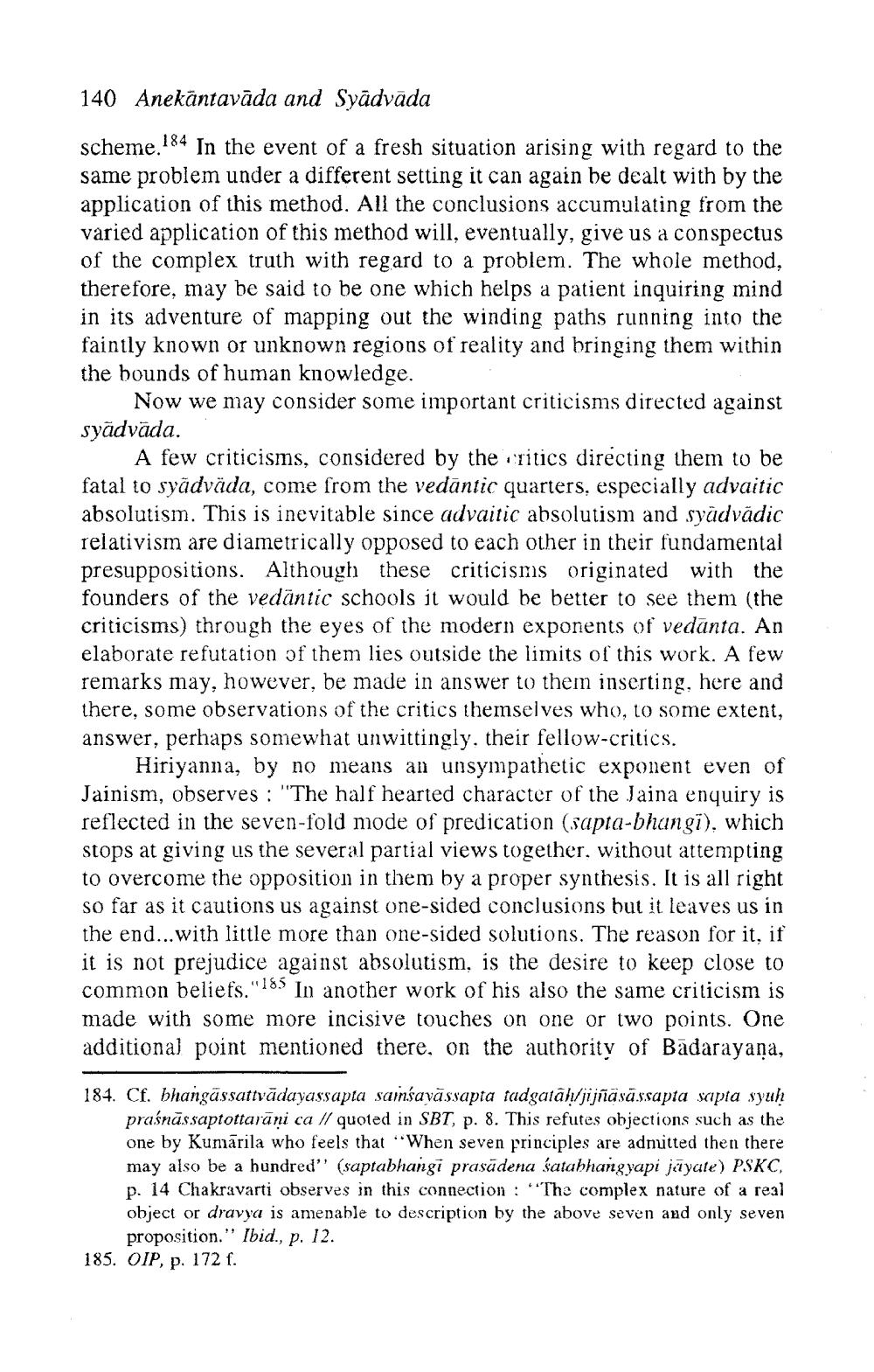________________
140 Anekantavāda and Syädvāda
scheme.184 In the event of a fresh situation arising with regard to the same problem under a different setting it can again be dealt with by the application of this method. All the conclusions accumulating from the varied application of this method will, eventually, give us a conspectus of the complex truth with regard to a problem. The whole method, therefore, may be said to be one which helps a patient inquiring mind in its adventure of mapping out the winding paths running into the faintly known or unknown regions of reality and bringing them within the bounds of human knowledge.
Now we may consider some important criticisms directed against syadvada.
A few criticisms, considered by the critics directing them to be fatal to syādväda, come from the vedantic quarters, especially advaitic absolutism. This is inevitable since advaitic absolutism and syadvádic relativism are diametrically opposed to each other in their fundamental presuppositions. Although these criticisms originated with the founders of the vedāntic schools it would be better to see them (the criticisms) through the eyes of the modern exponents of vedanta. An elaborate refutation of them lies outside the limits of this work. A few remarks may, however, be made in answer to them inserting, here and there, some observations of the critics themselves who, to some extent, answer, perhaps somewhat unwittingly, their fellow-critics.
Hiriyanna, by no means an unsympathetic exponent even of Jainism, observes : "The half hearted character of the Jaina enquiry is reflected in the seven-fold mode of predication (sapta-bhangī), which stops at giving us the several partial views together, without attempting to overcome the opposition in them by a proper synthesis. It is all right so far as it cautions us against one-sided conclusions but it leaves us in the end...with little more than one-sided solutions. The reason for it, it it is not prejudice against absolutism, is the desire to keep close to common beliefs."18. In another work of his also the same criticism is made with some more incisive touches on one or two points. One additional point mentioned there, on the authority of Badarayana,
184. Cf. bhangässattvādayassapta samsavāssapta tadgatah/jijñasāssapta sapta syuh
praśnāssaptottarani ca // quoted in SBT, p. 8. This refutes objections such as the one by Kumārila who feels that "When seven principles are adnutted then there may also be a hundred" (saptabhangi prasādena śatabhangyapi juyate) PSKC, p. 14 Chakravarti observes in this connection : "The complex nature of a real object or dravya is amenable to description by the above seven and only seven
proposition." Ibid., p. 12. 185. OIP, p. 172 f.




